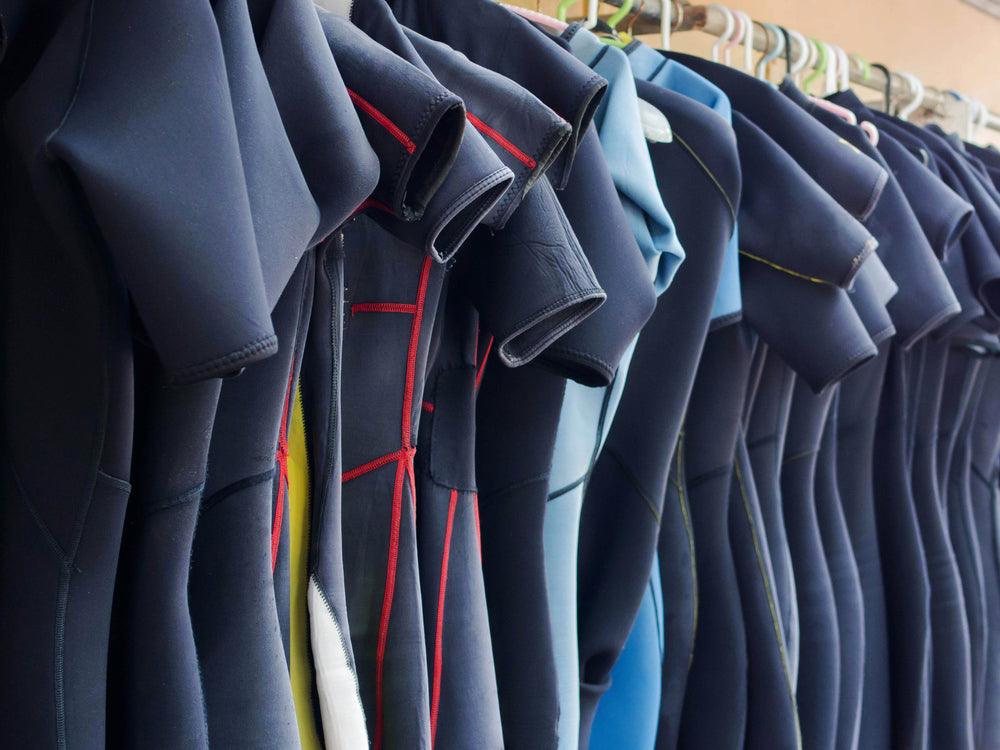
A wetsuit is a type of protective suit worn by those who spend a lot of time in the water. Divers, swimmers, or surfers that swim in cold water are some of those who usually wear wetsuits. A wetsuit insulates the wearer thus helping them retain body heat, which in turn helps them avoid hypothermia (dangerously low body temperature).
How Does A Wetsuit Work?
If you have ever seen a wetsuit, you might have assumed that it is designed to keep out water. However, that isn’t the case at all. Wetsuits are actually not designed to keep you dry and you can still get wet while wearing one. The main purpose of a wetsuit is to keep you warm while in the water and they do that by first letting you get just a bit wet.
Wearing a wetsuit allows the wearer to withstand cold temperatures, depending on what it has been designed to do. Some of the wetsuits are actually so advanced that they can keep you safe and warm even when the temperature of the water around you is sufficient to kill you if you weren’t wearing your wetsuit.

Wetsuits and Warmth
A wetsuit essentially works to keep you warm through multiple layers of both water and air. The following is a detailed description of the different layers of a wetsuit and how they work to ensure that you stay warm and safe in the water.
- Innermost Layer
The innermost layer is the gap between your skin and the wetsuit. A tiny amount of water gets into the wetsuit immediately you get into the water, which forms a thin layer against the skin. The thin layer of water rapidly heats up to a level that is very close to your body temperature. The wetsuit then holds in that heat and helps keep you warm while the water around you is much colder.
- Fabric Layer
The second layer comprises of the wetsuit fabric that presses against the skin and it is usually something comfortable. Materials such as nylon are often used for this layer. It is designed to prevent the wetsuit from rubbing against the skin and irritating the body while you are in the water. It can also help to prevent chafing.
- Heat-Reflecting Layer
Wetsuits sometimes also include a layer of heat-reflecting material, which usually includes metals such as titanium or even copper. The idea of a heat-reflecting material may sound somewhat strange, but the material is actually used for reflecting heat back towards the body thus preventing heat from your body from escaping the wetsuit.
- Neoprene Layer
The vast majority of wetsuits also include a neoprene layer. Neoprene is a special kind of rubber that’s used by most manufacturers due to its qualities. It has nitrogen gas bubbles trapped within it, which makes it an excellent heat insulator. It is also relatively flexible, which means that it doesn’t adversely impact the wearer’s ability to move.

- Outermost Layer
The durable outer layer is also included in some wetsuits. This layer is designed to withstand snags and prevent your elbows and knees from being injured while wearing the wetsuit out in the water. The outermost layer is also highly resistant to abrasion.
Final Thoughts
Wetsuits have been designed to keep you warm in two different ways. Heat trapped within the various layers and heat that doesn’t escape the body is reflected back towards the body before getting lost. This ensures that the wearer stays nice and warm, even when the water temperatures are freezing.
If you want to buy the highest quality wetsuits, be sure to check out Beachin Surf today. We offer a wide range of essentials for your surfing and outdoor needs including a large range of wetsuits perfectly suited for your needs.
Please feel free to visit us at 262 Maine Road, Toukley, NSW to check out our wetsuit range. You can also call ahead to make sure we get to assist you properly.
Please call us today on (02) 4396 5159 or feel free to send us an inquiry.
